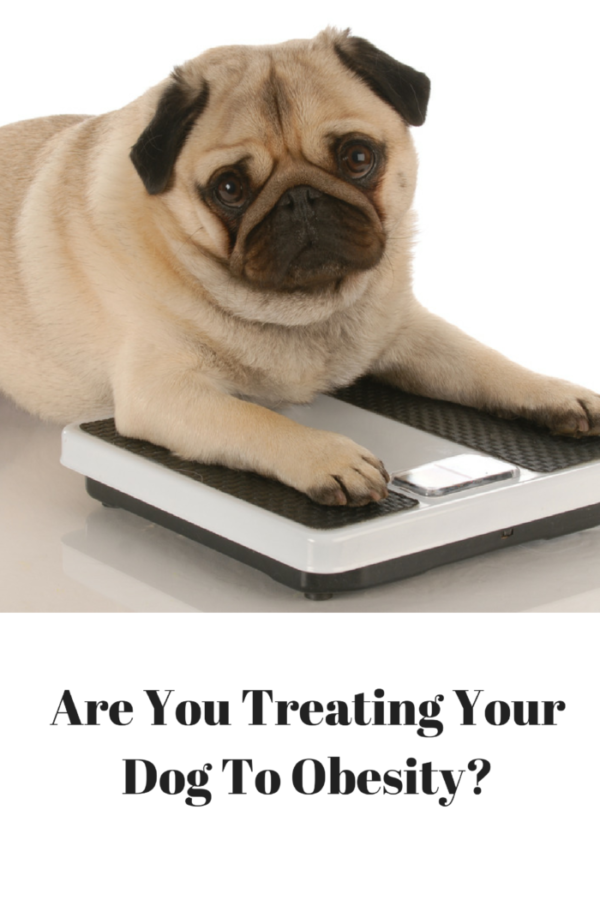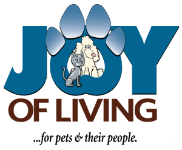Are You “Treating” Your Dog to Obesity?
Posted on April 21, 2017 by Joy of Living No comments

Have you noticed your dog getting a bit thick in the middle lately? Many pet guardians consider the act of giving their dog treats as a sign of love. In reality, giving too many treats is a leading cause of dog obesity.
According to perfectpuppycare.com, the right treat portion for your dog depends on the breed, size, age, living conditions and how much exercise your dogs gets daily.
Determining If Your Dog Is Obese
Someone asked me about this recently. The easiest way to tell if your dog is overweight or obese is to stand over him, then look down. You should be able to feel the dog’s ribs but not see them. If you can see them, they are underweight.
If you can’t see the dog’s ribs or feel them when you place your hands on the side of the chest, the dog is overweight.
Dogs should have a taper at the waist (between the abdomen and where the hips go into the socket). If there is an extreme taper at the waist, the dog is underweight. Little or no waist tapering indicates the dog is too heavy and will look oval shaped.
Obese pets will have a pendulous abdomen, hip fat, and neck fat.
Practice Portion Control
Dog obesity can lead to any number of serious health conditions, so it is important for dog owners to understand portion control when it comes to treats. If you think you are showing love to your dog by giving him treats, but you might be shortening his life. It is important to understand the balance between what your dog wants and what you know he should have.
Limit the amount of treats you give to your dog to no more than 10% of his daily caloric intake. #doghealth Share on X Remember that treats do have calories, some actually have quite a few, so include treat calories in your dog’s daily intake. I recently was notified by a dog walking client that they were watching their dog’s weight.I’m not a big treat giver, so after reading the note from the client, I happened to check out the bag of treats for nutritional information. The treats are people food small beef sausage bits. Turns out two of the treats have 130 calories and 400 grams of sodium! So if the dog gets the one treat a day I give after our walk, and his people give him two treats when he goes in his kennel (presumably when they leave in the morning, and at bedtime), he’s consuming close to 300 calories a day from treats, not to mention the sodium of over 800 grams. This could very well be a big contributor to the dog’s weight gain!
As your dog ages, you may need to reduce this amount because his metabolism can be slower than when he was a puppy. Avoid giving your dog so many treats that he refuses to eat his meal.
Look For Healthy Treats
The treats you see in the store are designed to attract your attention, not your dog’s attention. He doesn’t care at all if those dog treats look like cute hamburgers or hot dogs. He just wants to eat them! Further, it is important that you look for treats that are low in calories and add nutritional value to your dog’s diet.
There are so many dog treats available on the market today. Consult with your veterinarian so you can offer the best treats for your dog. If you begin by introducing fresh veggies (steamed carrots, green beans with no salt are great options) and fruits (small bite of apple or banana are great options) to your dog when he is a puppy, he will consider them as treats.
If you give your dog bites of people food as treats on occasion, avoid sugar-free foods that contain xylitol (extremely lethal to dogs), or foods that contain onion (also dangerous for dogs). Check food labels for ingredients before sharing with your dog.
Conclusion
Dog obesity isn’t so different from human obesity. Think of dog treats as we do desserts. Compare the number of treats you feed your dog daily to the number of desserts you eat.
Many dog treats have quite a few calories and are too big for smaller dogs. Break the treat into small pieces, then treat your dog. He may not like the smaller portion size at first, but he’ll get used to it. Even better, he’ll become a leaner dog after a while!

Comments